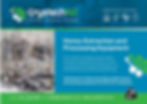Floods Leave Lasting Damage
- Patrick Dawkins
- Sep 2, 2022
- 5 min read
Beekeepers in many regions, in both North and South Island, are dealing with the effects of historic levels of flooding in August. Many are unable to assess the damage as access to apiaries is blocked by road closures and impairments on private tracks. However, the worst might yet to come, with beekeepers facing inability to manage unreachable hives at a crucial time of the season. For some, beekeeping has even been pushed aside as emergency response takes priority, including one Marlborough business on the brink. We check in with beekeepers from around the country to get their reports.

This time last year Rob and Sabine Harpers’ “Logistical Nightmare” at Sherrington Honey in the Marlborough Sounds was detailed. After making it through that season with their business taking a big hit, but intact, a similar setback could spell the end of their beekeeping enterprise.
“I haven’t thought about it. We are still in emergency response mode,” Rob Harper says of beekeeping, a week after a deluge of rain hit Marlborough and Nelson.
It started on August 16 and plunged both districts at the top of the South Island into an emergency. The Harpers, along with all residents of the Kenepuru Road in the Marlborough Sounds, remain cut off by road, and relying on boat access. For two and a half days the power was out at their Ohinetaha Bay home.
“I’ve lived out here 40 years and never seen anything like it,” Harper says.
He has yet to constructively think about how his business will respond to the setback, with their home and base cut off from all most all their 1400 hives, and staff, due to a multitude of landslips and the resulting closure of Kenepuru Road. To the south the road links them to their nearest towns, such as Blenheim and Picton, and then to the north-east it takes them deeper into the Sounds and their hives.
“There are slips on this road the size of houses, and wash outs just as big. There are houses that have been red stickered, houses yellow stickered. It’s not good.”
Owning one of the few boats in their area, Harper was called on to assist evacuations. He’s also had to jump on an excavator to hurriedly clear a slip threatening buildings at Te Mahia Bay Resort. Since then a neighbour has suffered a heart attack and Harper, a volunteer firefighter with first aid training, was called in to help. He believes the Marlborough District Council should be making an effort to provide land access of some type.
“We couldn’t get to a defibrillator because the road is blocked. We are just lucky he didn’t arrest. There should be, at the very least, an effort to put an emergency track in. We are trying to do everything by boat and its bloody ridiculous.”
While emergency response to humans has taken priority, beehives will need feeding and varroa counts have been high due to potential miticide resistance in autumn. However, getting spring treatments in anytime soon seems unlikely.
“The big thing is access. Even once they fix the main roads, the farmers in the outer Marlborough Sounds have had so much damage that they don’t know if they will be able to do anything with them, they don’t know if it will be economic. They have whole hill sides that have moved. The scale of it is crazy,” Harper says.
Sherrington Honey has just short of 1400 hives, down from 1700 a year ago, following their flooding and access setbacks last winter.

“Last July we had a storm come through and lost $150,000 worth of livestock. Insurance didn’t cover it because the loss was due to lack of access and you can’t insure roads. It will probably happen again and it will probably be the end of our business,” Harper laments.
In July the nearest main centre, Blenheim, registered significant flooding and their wettest month on record with 220.6mm. Therefore, August’s deluge – which amounted to hundreds of millimetres of rain in some western areas of Marlborough – fell into already saturated soils. In the Rai Valley, which sits on the border of Marlborough and Nelson and at the south end of the Marlborough Sounds, over 1000mm of rain was registered in a matter of days.
In Nelson
Beekeepers reached in the neighbouring Nelson region– while not themselves in emergency response mode like the Harpers – were also still in the dark when it came to the status of many apiaries.
“We haven’t been to our hives yet which is a real worry,” says Cathy Ayres, owner of River Terrace Apiaries.
“We can’t get over the Whangamoas because the road is closed. Because the sites are on forestry land, there is likely to be slips on the private tracks which will need to be cleared as well.”

While they expect some hives to be flooded away, until they can get to the apiaries they “just have to hope and be prepared for the worst when we do eventually get on site”.
Fellow Nelson beekeeper Murray Elwood of Mountain Valley Honey is in much the same situation. His mind also goes to those who own land.
“I have talked to a number of landowners and I really feel for the farmers. The land is pretty messed up. I am not sure if we have lost any hives through flood and I am not sure when we will be able to find out. Some we might get into soon, but others I’m not sure. We will have to wait and see,” Elwood says.
North Island
The weather pattern that hit Marlborough and Nelson hard also inflicted flooding damage to many other parts of the west of the country and into Northland. There, beekeepers suffered some hive losses and there were some close calls too as they rushed to move apiaries threatened by water.
“We are lucky, we have managed to save our hives, but I know of other beekeepers who have lost them to flooding or landslips,” says Lenny Stone, head beekeeper at Kaitaia-based Mana Kai Honey.

“We have managed to pull them out, but there were a few horrendous missions getting to them because of slips and rivers being so high. It’s been pretty nuts actually.”
With avocado pollination around the corner, as well as the first manuka flows of the season, it’s a rush to gain access to sites through sodden soils and damaged tracks in the far north.
“It is a matter of walking feed in, or, if you have access to a quad bike, taking that,” says Whangarei Bee Club president Nick Watkins.
“Some sites are a struggle to get to even with a quad bike though. You have to do what you have to do. You have to feed the girls.”
Further south, Egmont Honey lost “80 to 100” hives to flooding in South Taranaki according to head beekeeper Mark Thomas. That is not a significant setback to their large hive-holdings he says and they are glad many of their hives are wintered on dairy farms with lower flood risk. However, access to such sites will be limited by wet paddocks.
That is a situation being address by many, with beekeepers far and wide resigned to motorbike or foot access to apiaries for the time being.
At Sherrington Honey in the Marlborough Sounds, there are more pressing concerns though.
“We are in survival mode,” Harper says.
“Words don’t describe it really. Just when you think things are not too bad, the next-door neighbour shows up with someone who needs to get flown out on the helicopter because he’s having a heart attack,” he says, adding “we are just really stressed, but what can you do?”.












